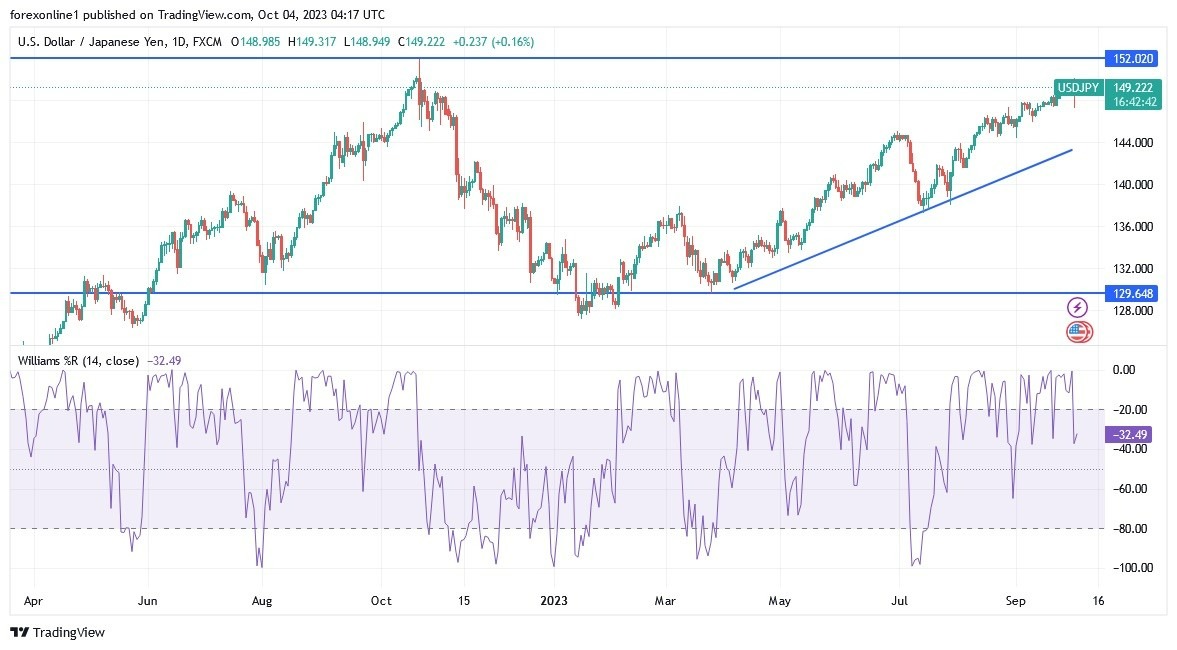- Suddenly, and as we have often noted and warned about, the Japanese yen rose from its weakest levels in a year against the US dollar amid speculation that Japanese officials were working to slow the decline of the currency.
- During yesterday's trading, the USD/JPY currency pair jumped towards the 150.16 resistance level, its highest level in a year, and the currency pair quickly collapsed amid a downward price gap to the 147.29 support level before settling around the 149.00 level at the time of writing the analysis.
- The quick performance came as a report showing that demand for labor in the United States remains resilient pushed Treasury yields higher.
Top Forex Brokers
The yen then rose nearly 2% within seconds to 147.29 yen to the dollar. It last traded at around 149.20, with traders selling the Japanese yen again as US bond yields rose to the highest level since 2007. Commenting on the performance, Bipin Rai, a forex analyst at CIBC, said of the possibility that Japanese officials may have acted: “ We won’t know until the official confirmation, but it sure seems like that.”
A Japanese Finance Ministry official had no comment on whether Japan had intervened in the yen's price.
In general, the US dollar has been on a tear over the past two and a half months, as investors digested the possibility that the Federal Reserve would keep US interest rates high for a longer period to tame inflation. Yesterday, the Bloomberg US Dollar Index rose to its strongest levels since November.
Meanwhile, traders were testing Japanese policymakers' commitment to ultra-loose monetary policy amid strong inflation, putting pressure on both the yen and the country's government bonds. In general, a weak Japanese yen makes imports more expensive for Japan, which could lead to higher prices. It also helps the country's exports by making them less expensive abroad. On the other hand, US Treasury bonds continued to sell on Tuesday. The yield on 30-year bonds rose to the highest level since 2007 after a report showed that job opportunities in the United States unexpectedly increased in August.
In Japan, Masato Kanda, the Finance Ministry's chief currency official, said he was in close contact with his American counterparts, as both sides agreed that excessive currency movements were not welcome. Finance Minister Shunichi Suzuki warned of currency fluctuations for six consecutive days until Tuesday. He said yesterday that he would not judge the possibility of intervention in the Forex currency market by currency levels but by fluctuations.
The first intervention by Japan came last year when the Japanese yen fell to 145.90 against the dollar in September. The country spent about $65 billion in total to support the yen on three occasions from September to October, the first time it intervened in 24 years. Last October's lows were the weakest for the Japanese currency since the early 1990s.
USD/JPY Technical Outlook
I still adhere to selling the US dollar against the Japanese yen (USD/JPY) from its highest levels if it breaches the psychological resistance level of 150.00. This may happen if US job numbers come in stronger than expectations and support further tightening of US central bank policy. What happened yesterday confirms the validity of our point of view that it would be a risk to buy at peaks that often warn of the possibility of Japanese intervention. The official announcement of the intervention will bring strong and sharp selling operations for the currency pair and for all currencies against the Japanese yen without exception. Breaking the support levels at 145.50 and 143.00 will be possible if that happens.
USD/JPY will remain in a bullish position until the reaction to the announcement of US jobs numbers at the end of the week.

Ready to trade our Forex daily forecast? We’ve shortlisted the best currency trading platforms in the industry for you.
